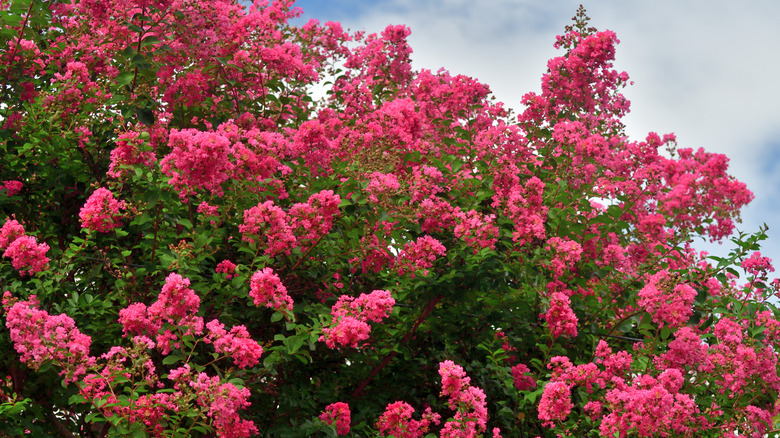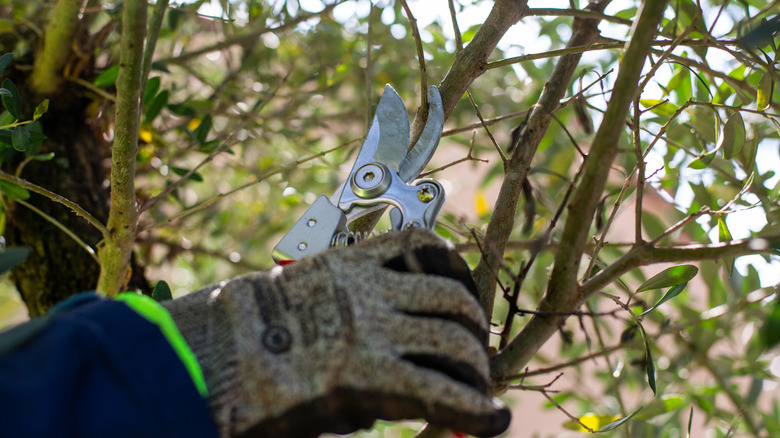Here's The Right Time To Trim A Crepe Myrtle (And When It's Best To Skip It)
There's nothing quite so pretty as crepe myrtle trees in full bloom in your yard. Crepe myrtle (Lagerstroemia indica) is a drought-resistant hardy shrub known best for bright pink, lavender, or white blooms, and is best suited for warmer climates in USDA Plant Hardiness Zones of 7 to 9. But there's a right time and a wrong time to trim your crepe myrtle, with the best time being to prune early in the year.
Crepe myrtle is also known as crape myrtle, but don't let this spelling difference hold you up. Both crepe and crape refer to a kind of fabric that easily wrinkles, just like the wrinkled petals of the crepe myrtle. But no matter how you spell it, crepe myrtles need lots of sun. While established plants can weather a drought, it's best to water your shrub or tree during dry periods if you want generous blooms.
This flowering shrub is also easy to propagate. You can even learn how to grow crepe myrtle from a cutting with just a 6 to 8 inch bit of a leafy mew growth. Once you've got one growing, you'll need to prune your plants, and this means getting out the shears early in the season before new growth appears. Aim to trim your crepe myrtle in February or March at the latest. You don't want to wait until new growth appears because then you risk reducing the number of new flowers.
Don't trim crepe myrtles in the fall and here's why
While some gardeners might be tempted to trim back crepe myrtles in the fall, it's not a good idea. Pruning crepe myrtles at the end of the season may trigger extra growth that can become damaged during colder winter months. Also, if you prune too much in the fall, then the plant will look extra spindly and sad throughout the autumn and winter.
Pruning is especially important for young crepe myrtles, so that you can help them learn to grow in the shape and design you prefer. Older plants might not need pruning at all. When you're ready to trim your crepe myrtle, just grab your gardening shears or loppers. Start by trimming off old flowers, about a quarter of an inch below each old bud. Then, it's best to move on to thinner branches and trim those back at no more than a 30-degree angle.
The whole idea is to prune in a way that will allow more sunlight and air circulation through the center of the plant. Trim in the early spring, and you'll have a healthier, prettier crepe myrtle come summer. While you're already out cutting crepe myrtles in February or March, think about giving them a dose of fertilizer. If you want to know when to fertilize crepe myrtles, the answer is typically once every spring before new buds grow.

